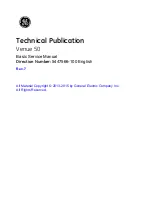
8
6.4 Maintenance:
316 Stainless Steel:
316 Stainless Steel is a durable material with strong anti-corrosion properties. With
proper care and maintenance, it will maintain an optimal appearance over a long
service life.
Exposure to high-saline environments, chlorides, abrasive chemicals, or carbon steel
will diminish its anti-corrosion properties and increase the risk of damage.
Always wear clean gloves when handling the unit.
Do not weld, cut, drill or grind carbon steel near the unit before installation. Resulting
particles will contaminate and rust stainless steel.
Do not clean stainless steel in direct sunlight or excessive temperatures.
Do not use cleaning products containing chlorides (i.e. hydrochloric acid) or other
abrasive chemicals. Do not use high-pressure cleaners.
If unsure about the suitability of a product for cleaning stainless steel, contact DTS.
Routine cleaning with soap and water is usually sufficient to maintain the corrosion
resistance and appearance of 316 Stainless Steel. Use a soft nylon brush to remove
any accumulated dirt.
Wash with mild soap or detergent, then rinse in clean water and wipe dry with a soft
cloth.
If signs of corrosion appear, clean immediately. To avoid progression of damage,
identify and address problems as early as possible.
Heavy damage includes structural compromises such as visible dents, cracks, breaks
and rust that can undermine the integrity of a product. Heavily damaged products
should be removed from service until a repair or replacement can be made. To prevent
worsening of damage, any significant rust should be removed as soon as possible.
If any parts are broken or missing, contact DTS to determine the availability of
replacements. Replace any screw only by 316 stainless steel screws. To replace cable
or gaskets, contact DTS. Maintenance period can vary depending on water quality and
environment conditions.
6.5 Waste Electrical and Electronic Equipment (WEEE) directive:
The machine, accessories and packaging should be sorted for environmental-friendly
recycling.
For EC countries: according to the European Directive 2012/19/EU for Waste
Electrical and Electronic Equipment and its implemetation into national right,
luminaires that are no longer usable must be collected separately and disposed of in
an environmentally correct manner.
!
Содержание 03.DN004.F08
Страница 1: ...DONUT 6 USER S MANUAL rel 1 0 GB...






























